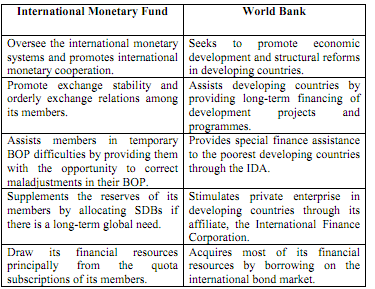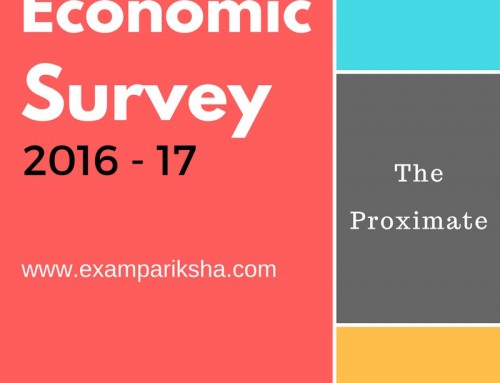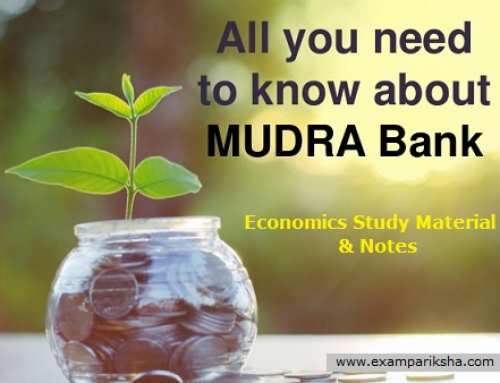The World Bank and the IMF performs different functions, but they are often confused with each other either with reference to their functions or with their operation. We are therefore, trying to clearly mark the points of difference between these two. You must remember that the name World Bank does not refers to a bank in conventional sense (this is because it performs development function). And International Monetary Fund or IMF performs the lending function(which we associate with banks).
History of IMF and World Bank:
- The Great Depression of 1930s led to failure of several economies as a result the gold standard for valuation of currencies(where currencies were back by gold) dissipated.
- Nations raised trade barriers, and devalued their currencies to compete against each other, in the export markets.
- These factors led to a decline in world trade, which caused high unemployment, and sharp drop in living standards across many countries.
- The Bretton Woods Conference after World War II in 1944, established a new international monetary system.[box type=”shadow” align=”aligncenter” ]C.D. Deshmukh was an Indian civil servant who represented India at the Bretton Woods Conference in 1944. Also remember that he was the first Indian Governor of Reserve Bank of India(RBI).[/box]
- The international Bank for Reconstruction and Development( now called the World Bank) and the International Monetary Fund (IMF) were established with different mandates.
- Both these IMF and World Bank are also known as ‘Bretton Woods Twins’.
Let us study the details of both on a comparative basis. This will clear the air about confusion regarding both these institutions.
Structure and Size of World Bank and IMF:
The World Bank:
- 188 countries member.
- The World Bank has two major organizations in it: The International Bank for Reconstruction and Development and the International Development Association (IDA).
- Headquarters: Washington, D.C.
- It has 7,000 staff members, and it is about 3 times as large as the IMF.
The International Monetary Fund:
- 188 countries member.
- Headquarters: Washington, D.C.
- It has 2,300 staff members.
Functions of IMF & World Bank:
The World Bank functions :
- The World Bank promotes economic and social progress in developing countries. It helps these countries to raise productivity to enable people to live a better and fuller life.
- Therefore, its primary mandate is to finance economic development.
The International Monetary Fund functions :
- The IMF is basically a lending institution which gives advances to members in need.
- It is the mentor of its members’ monetary and exchange rate policies.
- To maintain the stability in Exchange rate system around the World.
Operations of IMF and World Bank :
The World Bank operations:
- It works to encourage poor nations to develop, by providing technical assistance and funding for their projects and that will help realize the nations’ economic potential.
- It endeavors to achievement direct involvement of the poor in the economic activity, through agriculture and rural development, small-scale enterprises, and urban development lending.
- Since the World Bank’s lending decisions depend on the economic condition of the borrowing country, it carefully analyses the economy and needs of the sectors for which lending is contemplated. These studies help in formulation of an appropriate long-term development assistance strategy for the economy of the concerned country.

The International Monetary Fund operations :
- It primarily urges its members to allow their currencies to be exchanged without any restriction for the currencies of other member countries of IMF.
- The IMF supervises economic policies that influence the balance of payments in member’s’ economies. This provides an opportunity for early warning of any exchange rate or balance of payments problem in its member nations.
- It provides short- and medium-term financial assistance to its member nations which run into any temporary balance of payments difficulties. This financial assistance involves the option of convertible currencies to alter the affected member’s troubled foreign exchange reserves. It is done only in return for that government’s promise to reform their economic policies that have caused the said balance of payments problem.





